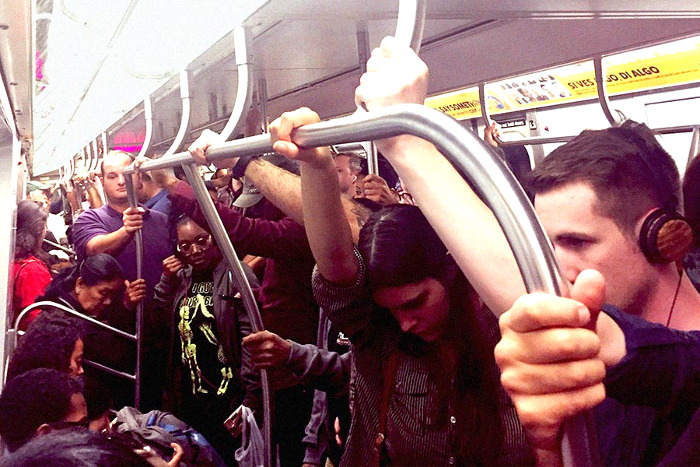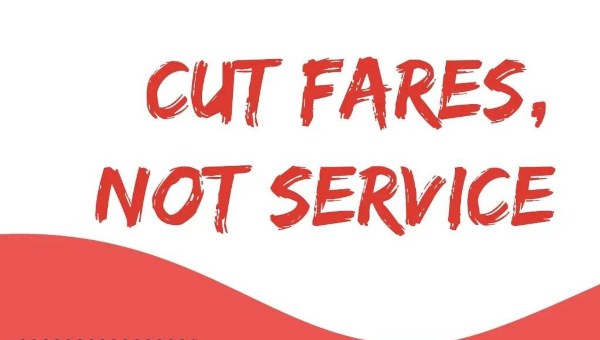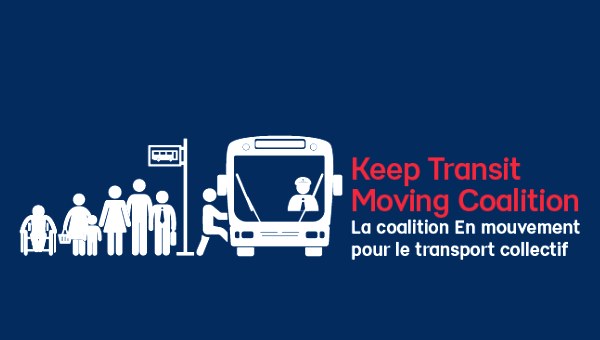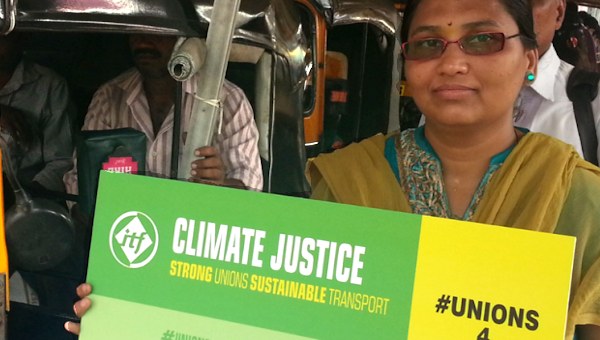The Subway Belongs to Us
One evening in November, I left my job at Hunter College and descended to the platform at Sixty-Eighth Street, home to the number 6 train, which shambles down one of New York’s most notoriously crowded and poor-performing subway lines. For a hundred years, the Lexington Avenue line, colored a sort of forest green on the Metropolitan Transit Authority’s (MTA) familiar maps, has been the only subway serving Manhattan’s densely-packed east side. With the demolition of the Second and Third Avenue elevated lines in 1942 and 1955, it became the only train, period, serving that half of the island.

Thirty-two years and a political-economic revolution later, construction resumed on the half-dug tunnels, and in 2017, with meticulously choreographed fanfare, New York Governor Andrew Cuomo cut the ribbon on the Second Avenue Subway, ninety-nine years after the first plans were drafted. Like all public projects in these shriveled times, though, the Second Avenue Subway bore the marks of the austerity regime under which it was conceived. Comprising just three stations, the line serves a twenty-four block stretch of the Upper East Side, one of the city’s more comfortable sections. Its major effect so far has been to jump-start real estate development, the sine qua non of all New York City politics, pushing up rents and lining the pockets of the big developers who fund the governor’s political campaigns. I used to think things like subways were built because there was a social “need” for them. That was before I learned what capitalism is and how it works.
Anxiety and Anger
Underneath the engaged, omniscient, and tirelessly encouraging façade I present to the students I love and admire, lies a significant wellspring of anxiety and anger. The City University of New York pays its so-called “adjunct” lecturers, who teach over half of all courses, salaries so low that there have been times where I could not afford basic necessities such as a subway pass, a commodity whose price has risen 33 per cent since I moved to New York City in 2009. I am not alone. Outside the gates at every station, groups of supplicants stand attentively, seeking eye contact with exiting passengers. A fleeting connection secured, they gesture furtively with their hands and mouth the word “swipe?” hoping to win the generosity of a stranger and get wherever they need to go. Others jump the turnstiles when they feel no one is looking, often into the arms of police who lurk behind walls and around corners. Risk is a way of life for the poor in this most expensive of cities.
All of this weighs on my mind as I descend to the platform. Like other low-income New Yorkers, at the end of this journey I will trade one scene of exploitation for another, settling in for another meal of legumes in the crumbling Brooklyn apartment whose owners demand 60 per cent of my income and resort to every subterfuge to sneak new rent increases past the state. In between is the nightly gauntlet that is the New York City subway. Every evening, one hopes against hope that the ride might resemble its ideal – a quick zip through the tunnels, stops at the expected stations, seats for all as we read, listen, and stare our way home, blissfully unaware of the complex, interwoven nest of effort that makes it all possible. Our intellects, however, having catalogued with cruel precision the subway’s deterioration over the past several years, tell us to prepare for something else.
The platform, sparse when I entered, begins to bulge with people as trains fail to arrive at their scheduled times. Collective anxiety mounts. Finally, a light from the tunnel bounces across the rusted girders. But the train fails to slow, and a bleat of the horn signals that this one, already late and too packed to let anyone on, is skipping Sixty-Eighth Street tonight. The system has landed its first blow. Before long, another train arrives, groaning into the station like a wounded animal. My shoulders relax a bit.
Fifteen minutes later, we have reached the City Hall stop. Transferring trains in New York generally threatens fresh catastrophe. The second I step from the train, I see my luck has run out. The deck is stuffed, buzzing with a malign energy, the sum of a thousand individual panics trapped and amplified on this decomposing hulk of subterranean concrete. The platform is a scene of disorder. No one faces the tracks, as they would if they expected a train to arrive. Older women and parents with children jockey for seats on the wooden benches, few in number and uncomfortable by design as part of the city’s longstanding commitment to punish and frustrate the homeless. The “countdown clocks,” electronic signs meant to tell you the wait time for your train, mock themselves with constantly shifting, crazy-quilt predictions before crashing at last into digital gibberish. A train is coming in seven minutes – no, four – no, nineteen – no, twenty-eight. Finally, the white flag goes up, and the signs retreat to the bare word “Delay.”
My fellow New Yorkers are losing it. “Don’t listen to nothing on those signs,” laughs an off-duty MTA worker. Her jovial detachment sends one rider over the edge. It has been clear for several minutes that he is the weak link in whatever tenuous social peace remains. Sweating profusely, pacing back and forth in jerky movements, he pleads with anyone who will listen that he has been in the system for two-and-a-half hours in a fruitless effort to traverse the city from the Bronx to Brooklyn. It is not hard to see that the attendant has committed a blunder a more seasoned bureaucrat would know to avoid: she has engaged. Whether she knows it or not, in addressing a passenger she has agreed to become, for this fleeting instant, the human face of the MTA, an organization whose actual rulers know better than to use the trains. The ensuing exchange devolves into near-violence. “GET FUCKED YOU RAT BITCH!!” is the last thing I hear as I trade bedlam for the rainy streets above.
“Risk is a way of life for the poor in this most expensive of cities.”
Behind the statistics that describe the lives of the urban poor is something less quantifiable. The toll of the gradual abdication of society by the rich over the last forty years is exacted not only in dollars and cents, but in stress, anger, hopelessness, and frustration – what we could call the affective fruits of disinvestment. These issue not only in day-to-day rancor but in shortened lives. Some Americans, especially people of color, have always known this, but as the upward redistribution of wealth proceeds apace, the sense that one’s life is enmeshed in a crisis begins to generalize. In a densely packed city like New York, the subway becomes a site where we can feel such a crisis swelling in especially acute fashion.
The reason the subways perform so poorly in New York can be summed up simply – no one in charge cares to spend enough money to make them run properly, and in the absence of any social movement that could force them to do this, they don’t have to. The problem is exacerbated by the garish corruption that the New York Times has been using to chase Pulitzers for the last couple years. There is no objective reason, for instance, why the cost of the Second Avenue Subway should outstrip that of similar projects in similarly situated cities by a surreal factor of seven. The MTA has been exposed as a foul warren infested with overpaid managers, armies of “consultants,” scads of low- or no-show jobs, uncompetitive bidding, and a revolving door between government and business. Like so many other institutions in American life, the agency, in addition to running (or not running) the subways, operates as a vast, private welfare state, managed in relative secrecy, sucking on a giant funnel of money fed by New York’s high and highly-regressive taxes.
At the same time, to focus on corruption misses something important about the forces that have brought us to this point. There is another reading of the history of the subway, one that presents it as a struggle over commodification and its consequences. In this story, the subway’s deterioration is part of a failure to resolve the contradiction between urban space as a vehicle for the satisfaction of human need and urban space as an instrument for the extraction of profit. By this light, the struggles over the subway reflect tensions at the heart of the capitalist state.
The subways were not built for people like you and me. They were built for people like J. P. Morgan, Cornelius Vanderbilt II, and Elbert Gary of U.S. Steel, who financed the first railway tunnels under the Hudson and erected what was then the largest office compound in the world atop its terminal in lower Manhattan. They were built for people like Abram Hewitt, the iron baron turned New York mayor who dreamt the political architecture – public financing, private profit – that got the system built but did not live to see it open in 1904. They were built for people like August Belmont Jr., heir to his father’s Rothschild-backed banking fortune, who as president of the Interborough Rapid Transit Company obtained a monopoly on public transit in Manhattan and refused to build new lines unless the city agreed to pay for them and guarantee his profits. And they were built for people like Charles T. Barney, the land speculator who became a director of the IRT in time to glean inside information on its proposed route. As a result, he was able to organize a syndicate that guzzled up still-cheap land in northern Manhattan and the Bronx, which he and his fellow developers transformed from a farming province into the sixth-largest city in America in the course of just five years. When the twentieth century began, Manhattan’s Lower East Side was the most crowded place on Earth. The subway changed all that, tripling the size of New York’s built environment and rearranging the geography of work, residence, and leisure. Our forebears among the working people of New York were less the architects of these changes than their raw material. They remained proletarians, their lives marked by a profound lack of autonomy, significant to capital only insofar as they could be mobilized as grist for the mill of profit.
“The toll of the gradual abdication of society by the rich over the last forty years is exacted not only in dollars and cents, but in stress, anger, hopelessness, and frustration – what we could call the affective fruits of disinvestment.”
The key to understanding the historical trajectory of the New York City subway is to grasp that, throughout its history, all attempts to dedicate the system to use-value – in other words, to make it a vehicle for the satisfaction of human needs instead of a machine for the extraction of profit – have met with hostility and abandonment by the rich. Private capital mostly forsook the subways after World War I, when opportunities for profit became difficult to locate. The threats were economic and, importantly, political. Mayor John Hylan, a Democrat and one-time motorman still bitter at his dismissal by the Brooklyn Union Elevated Railroad, had lurched left to fight off a socialist challenger and found that belligerence toward the hated transit companies was a reliable vote-getter. During his mayoralty, Hylan defended the five-cent fare as inviolable, pilloried the companies at every opportunity, and authorized the construction of a city-owned subway “planned, built, and operated to meet the transportation needs of the people … and not solely for the financial advantage of the operating companies or their officials.” Hylan’s Independent Subway System (IND) was an assault on the private companies, who sought desperately to raise the fare. The city, instead of guaranteeing their profits, now moved to jeopardize them. And because the IND competed with existing lines instead of opening up new frontiers for development, it drew an icy dismissal from real estate developers, who instead turned their attention to highways, the newest instrument of American capitalism’s growth-at-all-costs ethos. But the IND was the future of mass transit in New York. When the private companies failed during the Depression, the city became the owner of all three systems and the five-cent fare was enshrined as a sacred principle of what Hylan had called “the people’s subway.”
When the subway was a source of profit, private interests supported it. When it became a public good, it became their target. Paul Windels was a lawyer who cut his teeth throwing Communists out of City College for the Rapp-Coudert Committee, New York’s own “little HUAC.” In 1940, he formed the Committee of Fifteen, an anti-tax pressure group composed of bankers, industrialists, and realtors. The Committee sought to reduce property taxes by busting the five-cent fare and putting the subways in the hands of a quasi-private “authority” shielded from public accountability. The fare hike was a naked class issue – “the modern equivalent of the bread assize,” as one historian puts it. On April 20, 1948, Mayor William O’Dwyer sided with the elites and doubled the five-cent fare. By 1953, the system was in the hands of the New York City Transit Authority, run on a profit-seeking basis by a board of hand-picked appointees. As if to drive home the point, the Transit Authority was launched with another fare hike. The project to re-commodify the subways, to push the cost of their operation back onto the working class, had begun. The five-cent fare joined price controls, rent regulation, trade union power, and universal health care as features of a nebulous American social democracy choked at birth by the grasping hand of postwar reaction. In short, the subway had been saved from democracy.
In this telling, the 1920s and 1930s are the golden age of the New York City subway. They represent the moment when political control over a key social good was exercised on behalf of ordinary New Yorkers in a way not seen before or since. At the same time and for the same reason, it was the moment when the subway became a burden to the rich instead of an asset. It can be tempting to look to the city’s spectacular fiscal crisis of the mid-1970s as the dawn of the subway’s problems. But just as the fiscal crisis was the culmination of decisions made decades earlier, the decline of the subway was determined in key ways by the political triumph of the rich in the immediate postwar period, and in particular by the subway’s effective privatization in 1953. The trains did not turn overnight into the broken-down, graffiti-scarred warhorses that serve as emblems of the storied 1970s, when the city’s abandonment by capital created a vacuum into which artists and other devotees of use-value could temporarily swell. That the subways began to run on a shoestring as early as the 1940s is evidenced by Robert Caro’s descriptions of the crumbling “cattle cars” of the 1950s and 1960s in The Power Broker, his monumental work of New York history. Since that time, the history of the subway has been part of what we might call the long fiscal crisis – a series of stopgap efforts to prevent the system’s collapse while foisting as much of the cost as possible onto the backs of a working class whose travails, filtered differentially by race and gender, formed the basis of what observers by the mid-1960s had designated, with a resigned shorthand, as “the urban crisis.” The subsequent history of the trains, a sorry burlesque of slashed budgets, escalating fares, looted funds, and sordid self-dealing, can be read as part of this running battle to shield the rich from financial and political accountability, to preserve their ability to seize the proceeds of the economic project we call New York while shifting its costs onto the rest of us. The climax of this struggle was the fiscal crisis of the 1970s, when the wealthy effectively suspended whatever democratic government had existed in New York City, stripping elected officials of substantive control over spending decisions and resetting the municipal common sense to prioritize private accumulation at all costs. What the history of the subway since then shows us is that the crisis was not so much solved as its burdens rearranged in a thousand cruel ways.
There come times when we can no longer bear these burdens. I’m on the 6 train in December as the semester limps to a close. A homeless man teeters between the cars, fumbling unsuccessfully with a cigarette lighter as the train rocks him within an inch of death. The car is a Rubik’s cube of matter – faces, asses, armpits, backpacks, shopping bags, pushcarts – that manages to arrange itself anew at each stop. The train shrieks to a halt in the middle of the tunnel as a man and a woman beside me quarrel over space. In this war of words, the man is no match for his antagonist. He tries a trump card. “I’m a BLACK MAN!” he shouts, hoping to cow his opponent, a black woman. The gambit fizzles. “You’re a piece of shit,” she replies coolly. He resorts weakly to “bitch.”
A man standing next to the woman wheels back and smacks him in the jaw. The melee that ensues is not like the fights you see in the movies – it is messy, flailing, erratic. The combatants bounce off the walls, each other, and us. The car starts moving again, adding volatility to the contest and turning the rest of us into the unwilling inhabitants of an overstuffed pinball machine hurtling through an underground tunnel at forty miles an hour. People are screaming. Someone’s soup goes flying. After what seems like an impossibly long time, the train pulls into a station and the loser has an opportunity to slink away. The rest of us, soaked and disheveled, recompose ourselves and soldier on.
Soldiering is a good description of what New Yorkers do to survive in a city that feels like it is reverting to a feudal past. But the flip side of soldiering is masochism – pleasure from powerlessness. Sometimes I think being able to take things like this in stride makes us tough, makes us New Yorkers. The politicians who have ruined the subway certainly encourage this view. But other times I know it makes us weak. All around me, friends try experiments, bucking as best they can the material and emotional consequences of our era’s blueprint for capital accumulation. Before I examined its history, I imagined I would find a period when the subway worked, when it was not entangled in crisis. Then I realized that our needs themselves, even the very basic ones, are the crisis as far as capitalism is concerned.
I get frustrated that the most common responses to the fiasco are individual and alienating – to complain on social media, to vote with one’s feet, to make do. Given that our means of making do are fractured along lines of race, class, and gender, such individualized responses only ratify and harden our collective political disability. At the same time, I don’t have a comprehensive strategy for wrenching the subway toward democratic control, away from commodification, and into the realm of the common good. From New York to Liverpool, from Detroit to Jackson, Mississippi, the history of capitalist urbanism is replete with examples of the struggle to reclaim an urban space for human needs after capital has exhausted its potential as a vehicle for accumulation and cast it off as worthless. In New York, these efforts are complicated by the rebirth of the city as a privileged site for capital accumulation since the 1970s – a transformation executed over our heads by and for the most antidemocratic forces on the planet. Like most features of contemporary life, this transformation has been accompanied by intense and growing inequality – a relentless privatization of livability and an attendant hatred for anything common, anything social. It is no wonder the subway, in some ways the epitome of a shared, democratic space, lionized by ordinary New Yorkers for that very reason, should be the target of such aggressive neglect.
Movement to Reclaim the Subway?
What would a movement to reclaim the subway look like? While its precise shape is impossible to predict, the electoral system is likely to be a highly unreliable vehicle for achieving universal access and democratic control over public transport. From the standpoint of the welfare of ordinary people, New York’s political system is deeply broken. Even if the normal barriers to power were eroded, the lessons of the fiscal crisis, when the pretense of democratic self-government was discarded with breathtaking ease, should caution us against imagining the state as a neutral instrument easily wielded by the working class.
The alternative is direct action. As long as people keep paying their fares, the message is clear – we accept present conditions, however begrudgingly. Direct action is about disruption. It is about showing, not telling. Its goal is to puncture the normal. We should come to understand, though, that the governor’s normal, the financiers’ normal, the real estate developers’ normal, is our suffering, our abnormal. The goal of direct action should be to disrupt the normal abnormality of latter-day New York.
For direct action to be disruptive, it has to be massive and broad-based. That means people have to trust one another. This can feel especially difficult today, as contemporary capitalism fashions an ever more clenched, anxious, and insecure world whose politics express themselves in morbid visages filled with fear, anger, and resentment. At the same time, we are in the midst of a sequence of popular struggles rooted in direct action whose future is uncertain but whose causes have by no means dissipated. Participants in the Arab Spring, the Occupy movement, Black Lives Matter, teachers’ strikes, and a host of other battles know from hard-won experience that direct action is transformative and contagious, that it alters one’s sense of time and of what is possible in the life we share. In at least one case, namely the 2013 protests that shook the Brazilian state, the precipitating event was an increase in transit fares.
The first step is to overcome alienation, to talk to people. This includes your friends, fellow riders, and transit workers, whose roles give them insight into the system and a measure of power over it. Doing this requires a faith in the character and capacities of ordinary people – insisting that “every cook can govern.” Ordinary people are smart, creative, and capable, especially when offered a project that asks them to utilize what is most precious within them and that stands a reasonable chance of success. Evidence of this is all around us, if we know where to look. It is visible in any classroom at the City University of New York, for example, whose students, in the main members of the working class, immigrants, and people of color, routinely surmount enormous obstacles to reach deeply felt goals.
Direct-action movements have the potential to point beyond themselves by unmasking and rejecting the inhuman logic of capitalism, which denies us the requisites of a fulfilling life unless we can prove we are useful to those who have money. Part of that struggle for fulfillment involves the right to move as we see fit, to use the infrastructure that we have created. By reorienting the city away from accumulation, hoarding, and exclusion, we uncover its potential as a vehicle for the development of our capacity to support one another’s aspirations. Our struggle, in short, should be conducted in the service of a benevolent appropriation. It must be our guiding conviction that the subway, like the future, belongs to us. •
This article first published on the Commune website.





